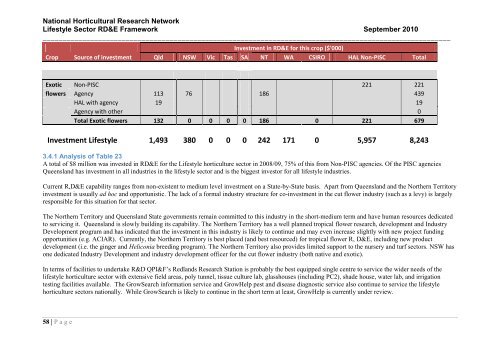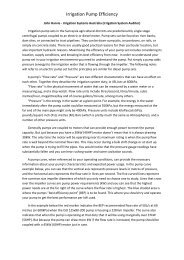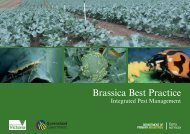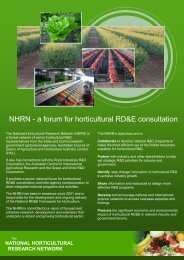National Horticultural Research Network - Horticulture Industry ...
National Horticultural Research Network - Horticulture Industry ...
National Horticultural Research Network - Horticulture Industry ...
Create successful ePaper yourself
Turn your PDF publications into a flip-book with our unique Google optimized e-Paper software.
<strong>National</strong> <strong>Horticultural</strong> <strong>Research</strong> <strong>Network</strong><br />
Lifestyle Sector RD&E Framework September 2010<br />
_______________________________________________________________________________________________________<br />
Investment in RD&E for this crop ($'000)<br />
Crop Source of investment Qld NSW Vic Tas SA NT WA CSIRO HAL Non-PISC Total<br />
Exotic Non-PISC 221 221<br />
flowers Agency 113 76 186 439<br />
HAL with agency 19 19<br />
Agency with other 0<br />
Total Exotic flowers 132 0 0 0 0 186 0 221 679<br />
Investment Lifestyle 1,493 380 0 0 0 242 171 0 5,957 8,243<br />
3.4.1 Analysis of Table 23<br />
A total of $8 million was invested in RD&E for the Lifestyle horticulture sector in 2008/09, 75% of this from Non-PISC agencies. Of the PISC agencies<br />
Queensland has investment in all industries in the lifestyle sector and is the biggest investor for all lifestyle industries.<br />
Current R,D&E capability ranges from non-existent to medium level investment on a State-by-State basis. Apart from Queensland and the Northern Territory<br />
investment is usually ad hoc and opportunistic. The lack of a formal industry structure for co-investment in the cut flower industry (such as a levy) is largely<br />
responsible for this situation for that sector.<br />
The Northern Territory and Queensland State governments remain committed to this industry in the short-medium term and have human resources dedicated<br />
to servicing it. Queensland is slowly building its capability. The Northern Territory has a well planned tropical flower research, development and <strong>Industry</strong><br />
Development program and has indicated that the investment in this industry is likely to continue and may even increase slightly with new project funding<br />
opportunities (e.g. ACIAR). Currently, the Northern Territory is best placed (and best resourced) for tropical flower R, D&E, including new product<br />
development (i.e. the ginger and Heliconia breeding program). The Northern Territory also provides limited support to the nursery and turf sectors. NSW has<br />
one dedicated <strong>Industry</strong> Development and industry development officer for the cut flower industry (both native and exotic).<br />
In terms of facilities to undertake R&D QPI&F‟s Redlands <strong>Research</strong> Station is probably the best equipped single centre to service the wider needs of the<br />
lifestyle horticulture sector with extensive field areas, poly tunnel, tissue culture lab, glasshouses (including PC2), shade house, water lab, and irrigation<br />
testing facilities available. The GrowSearch information service and GrowHelp pest and disease diagnostic service also continue to service the lifestyle<br />
horticulture sectors nationally. While GrowSearch is likely to continue in the short term at least, GrowHelp is currently under review.<br />
58 | P a g e






